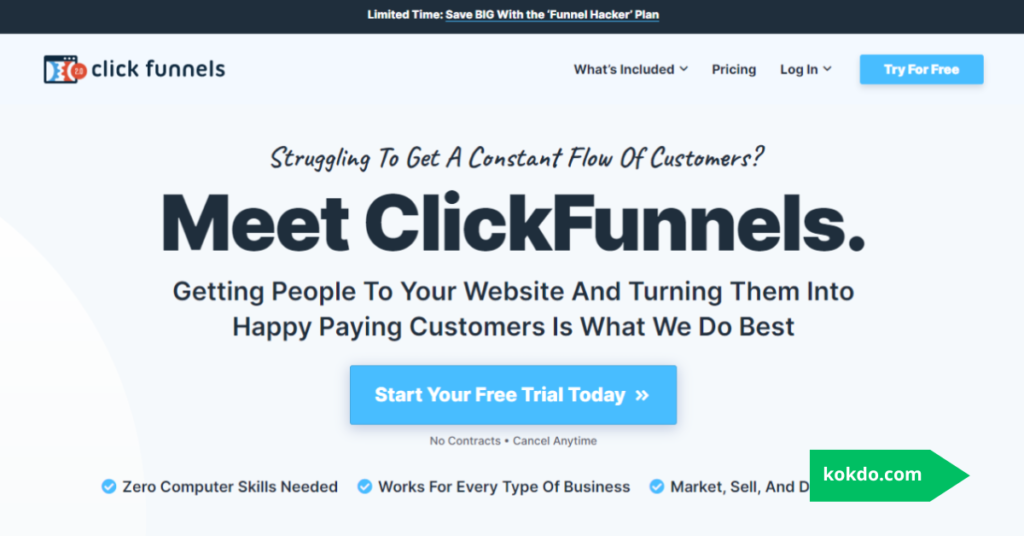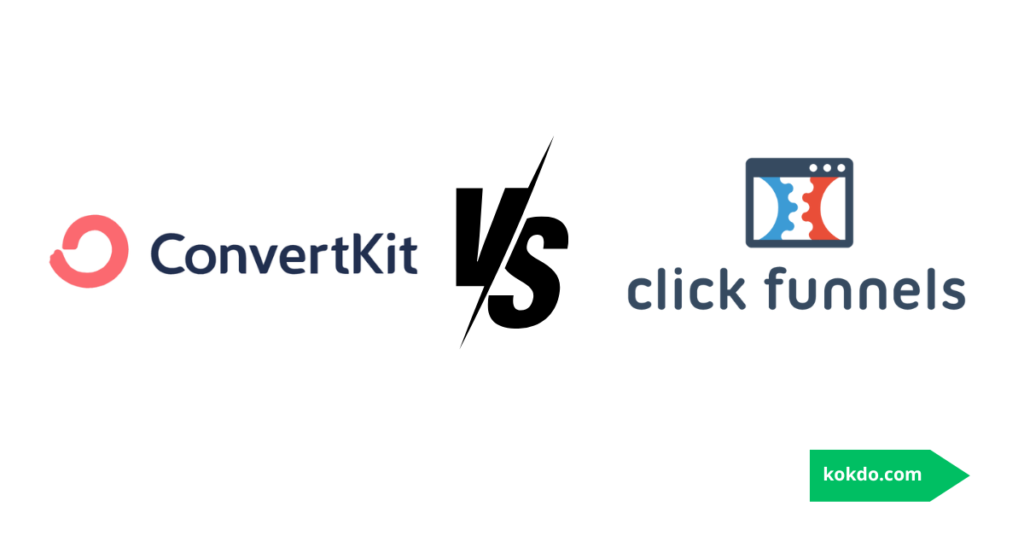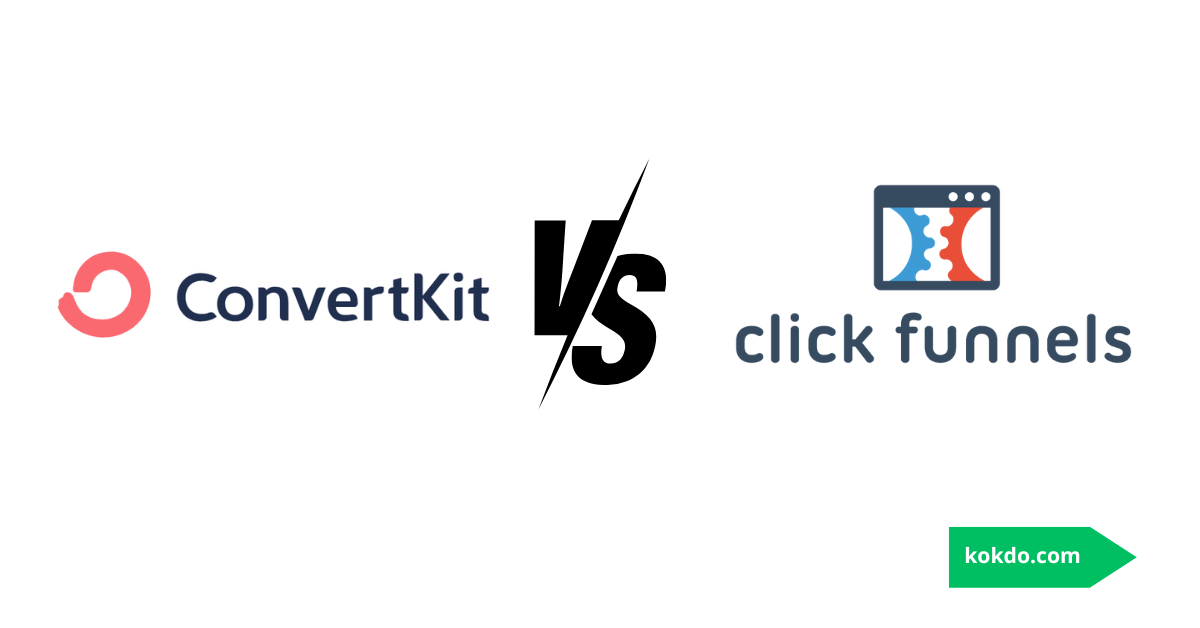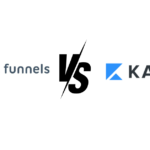Table of Contents
Introduction:
Convertkit vs ClickFunnels: For entrepreneurs, digital marketers, and content creators looking to build and monetize their online presence, the choice of marketing software can be pivotal. Two popular options that often come up in conversation are ConvertKit and ClickFunnels. While both tools aim to assist businesses in growing their audience and increasing sales, they serve distinct functions and offer different features that cater to varied business needs. In this deep dive, we’ll explore the nuances of ConvertKit vs ClickFunnels to help you decide which is the best fit for your online endeavors.
What is ConvertKit?

ConvertKit is an email marketing software designed primarily for bloggers, podcasters, and other content creators who want to build and engage their audience through email campaigns. It’s a powerful tool for those who prioritize growing a subscriber list, automating email sequences, and segmenting their audience for targeted communication.
Key Features of ConvertKit
- Email Marketing Automation: ConvertKit allows you to create automated email sequences that send a series of emails based on specific triggers or actions taken by your subscribers.
- Segmentation and Tagging: You can segment your subscribers based on their behavior, interests, or demographics and tag them for more personalized messaging.
- Landing Pages and Forms: ConvertKit offers customizable templates for creating landing pages and opt-in forms to help capture leads and grow your list.
- Broadcasts: You can send one-time email blasts to your entire list or to specific segments to promote content, product launches, or other announcements.
ConvertKit is designed to be user-friendly, making it accessible for those who may not be overly technical but still want a robust email marketing platform.
What is ClickFunnels?

ClickFunnels is a comprehensive sales funnel builder that empowers entrepreneurs to design and deploy sales funnels without needing extensive coding knowledge. It’s geared towards those who want to create a series of web pages that lead a prospect through a sequence that culminates in a sale or other conversion goal.
Key Features of ClickFunnels
- Sales Funnel Creation: ClickFunnels simplifies the process of building sales funnels with its drag-and-drop editor.
- Landing Page and Website Builder: You can construct landing pages, sales pages, membership sites, webinars, and entire websites.
- Payment Integration: ClickFunnels integrates with payment processors like PayPal and Stripe, allowing you to take payments directly within the funnel.
- A/B Testing: Test different versions of your landing pages and funnels to determine which converts better.
ClickFunnels excels at guiding customers through a well-defined sales process, all within its ecosystem.
ConvertKit vs ClickFunnels: Comparing Use Cases

Audience Building and Engagement
If your main goal is to build a list of email subscribers and engage with them regularly, ConvertKit is likely the better choice. Its email automation and segmentation features make it easy to maintain a direct line to your audience, providing them with valuable content and fostering relationships that can lead to future sales.
Sales and Conversion Focus
ClickFunnels shines when your primary objective is to create conversion-optimized funnels that guide potential customers to a purchase decision. From opt-in pages to upsells and downsells, it offers a suite of tools for maximizing the value of each lead.
Pricing Plans: ConvertKit vs ClickFunnels
When it comes to pricing, there’s a noticeable difference between the two platforms.
ConvertKit offers a free tier that includes up to 1,000 subscribers, with pricing starting at $29/month for their Creator plan once you exceed that number. As your list grows, the price increases accordingly, but the capability of their email marketing tools grows with your business.
ClickFunnels, on the other hand, doesn’t have a free plan but does offer a 14-day free trial. Their basic plan starts at $97/month, which can be a significant investment for small businesses or solopreneurs. However, it includes access to all the funnel-building and optimization tools you need to create a high-converting sales process.
Integration and Ecosystem
Both platforms offer various integrations with other software. ConvertKit can connect with eCommerce platforms, webinar tools, and lead capture services. ClickFunnels has a broader integration portfolio, including email marketing tools, which means you could technically use ConvertKit for email marketing alongside ClickFunnels for your sales funnels.
Learning Curve and Support
ConvertKit is relatively straightforward and offers detailed documentation and customer support to help you get started. In contrast, ClickFunnels’ robust feature set might take more time to master, but they provide an extensive knowledge base, guided training materials, and a supportive community that can help navigate the learning curve.
Conclusion: Which is Right for You, ConvertKit or ClickFunnels?
The decision between ConvertKit vs ClickFunnels boils down to what you aim to achieve with your online business.
For content creators focused on growing and nurturing an email list, ConvertKit offers a powerful suite of tools tailored to your needs without overwhelming you with complexity.
On the flip side, if you’re aiming to build sales funnels that convert visitors into customers and want an all-in-one platform to manage those funnels and transactions, ClickFunnels could be the robust solution you’ve been searching for.
Carefully considering your business goals, budget constraints, and technical expertise will guide you to


